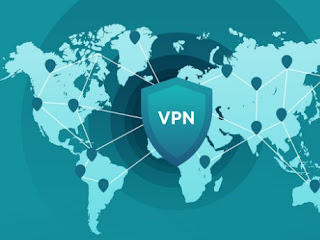Update How to set up a VPN on Windows 10. The easiest way to get your favorite virtual private network up and running on your new Windows 10 operating system is to simply download your VPN’s app from the Windows store and install it, just as you did on your previous version of Windows.
It may sound tricky, but the process takes about 15 to 20 minutes and can be broken down into two main components: creating a VPN profile, and then connecting to the VPN. Here’s the step-by-step.
What you’ll need
VPN Service: Even though you’re using Windows 10 to manage your connection to a VPN, you’ll still need to choose which VPN service to connect to. The service you choose will determine who’s running the servers you’re about to connect to.
Check out our updated directory of the best VPNs we’ve found to get a quick idea of which provider might be best for you. But no matter which service you choose, keep an eye out for any red flags that might indicate a less-than-private service.
Protocol choice: During setup you’re going to be asked to choose a protocol from a list. In the simplest terms, the protocol you choose determines the strength of your encryption. There are several types of protocols used by VPNs, and whichever VPN you choose will use one of them.
The four most common are: PPTP, L2TP/IPSec, SSTP and OpenVPN. During setup, you’ll tell Windows which type of protocol your VPN uses by selecting it from a list. Your VPN provider will tell you which it uses.
Update How to set up a VPN on Windows 10
Create a VPN profile and connect to it
1. On your Windows 10 desktop, right-click the Start button and select Settings from the menu that appears.
2. In the new window that pops up, click Network & Internet then select VPN from the list of connection options on the right side of the screen.
3. Click Add a VPN connection.
4. This will take you to a configuration screen. Under VPN provider, click the dropdown menu and select the option that says Windows (built-in).
5. In the Connection name field, type out the name you’d like to give this particular connection. Try to create one that you’ll easily recognize as a VPN connection.
If, for example, you’re using ExpressVPN and want this connection to be the one you use to connect to a New York server, name the connection something like “ExpressVPN, New York server.”
Read more: How to identify a good VPN: 3 features to look out for
6. In the Server name or address field, type the actual address of the server you’re connecting to. Your VPN service will be able to provide this information.
Generally it will look like a website URL, with an alphanumeric string of five or six characters followed by the name of the VPN service you’re using.
7. In the VPN type dropdown, you’ll be asked to choose a protocol like I mentioned above. Select whichever one your VPN service uses.
8. In the Type of sign-in info dropdown menu, choose the way you’re going to sign in to your new VPN connection. Different VPN providers have different preferred methods so you may wish to check with your VPN provider to be sure,
But for most commercially available private VPNs, you’ll be selecting Username and password.
This means whenever you choose this new VPN connection on your Windows 10 machine, you’ll need to log into it with the same username and password you normally use to log into your VPN service on any other device.
9. Click the Save button. You’ve now created your VPN profile, and all that’s left to do is to connect to it.
10. Return to your Network & Internet settings page, and select VPN from the options on the right-side of the screen as you did before. Your newly created VPN connection will appear in the list (in our example, you’d see “ExpressVPN, New York server”). Select it and click Connect.
And there you have it. Sure, maybe you’re missing out on some of the additional features you’d otherwise get from using your VPN provider’s downloadable application.
But on the other hand you’re also now have greater control over your connection and you don’t have to deal with a potentially bloated piece of software constantly running in the background. Bon voyage!
Thanks for read our articles about technology is Update How to set up a VPN on Windows 10. Happy practice and soon yeah.
